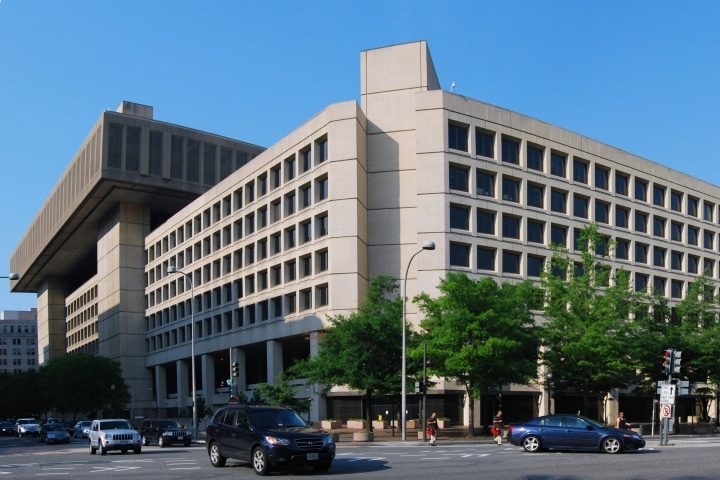
Democrats and Republicans have introduced competing bills in the halls of Congress that would affect the architectural character of new federal buildings.
As Politico reports, Senator Marco Rubio (R-Fla.) in the Senate and Representative Jim Banks (R-Ind.) in the House have proposed the Beautifying Federal Civic Architecture Act, which would require the federal government to select designs “derived from the forms, principles, and architecture of Greek and Roman antiquity” for new buildings.
Justin Shubow, a conservative architecture critic who serves as president of the National Civic Art Society, a D.C.-based nonprofit, told Politico that the Republican bill takes a broad view of what is considered “Greek and Roman,” and actually encompasses styles as diverse as Gothic, Spanish Colonial, and Pueblo Revival, with language about regional traditions.
In fact, according to Shubow, the only two styles which the legislation specifically targets for keeping out of federal architecture are Brutalism and Deconstructivism, which have often been blasted by conservatives and traditionalists as examples of “ugly” modern art and architecture. The National Civic Art Society has gone so far as to pan modern architecture as “dehumanizing.”
The Republican legislation is, in fact, an effort to codify and expand upon executive orders signed by President Donald Trump and then rescinded by Joe Biden. The legislation includes language touching on the need to “inspire the human spirit,” “ennoble the United States” and “command respect from the general public.”
The two executive orders were signed in 2020. The first enacted a requirement that new government buildings portray American ideals or important American historical figures, while mandating that these depictions not be in abstract or modernist styles.
The second Trump executive order is largely the basis of the current Rubio bill — it established classical architecture as the style of preference for federal buildings.
During his presidency, in fact, Trump appointed Shubow to the U.S. Commission on Fine Arts, which oversees new buildings in the capital.
But both Trump’s actions in office and the new proposal from Republicans have riled Democrats. Once in the White House, Biden not only killed Trump’s executive orders, but replaced Shubow with Billie Tsien, an architect known for her modernist style.
And Democrats have introduced their own legislation. Representative Dina Titus’ (D-Nev.) bill, the Democracy in Design Act, is endorsed by the American Institute of Architects (AIA). The legislation would enshrine a document published by a Kennedy administration panel, titled “Guiding Principles for Federal Architecture,” which declares that “the development of an official style must be avoided.”
Shubow counters that the 1962 document causes government officials to forsake their responsibility of supervising the contractors by stipulating that “Design must flow from the architectural profession to the Government.” Moreover, Shubow argues that AIA, being a trade association for architects, has a vested interest in seeing the 1962 document made official law so that American architects can gain greater political power.
In addition, a poll commissioned by the National Civic Art Society found that Americans favor traditional architectural styles by a significant margin.
In a conversation with Politico, Shubow spoke about the connection between classical architecture and the nation’s foundational republican ideals — a connection brought to life in the classical building style for which Washington, D.C., is known:
His organization’s official mission involves advocating for “beautiful, meaningful civic design.” “I would love for there to be a congressional hearing, where members can be shown photos of the ugly avant-garde buildings the government has been constructing,” Shubow tells me.
“The founding fathers consciously chose the classical style for the core buildings of government,” he adds. “They saw that classical architecture was timeless and time honored. And they wished to harken back to democratic Athens and republican Rome. They started a trend that continued for 150 years, and Americans came to associate classical architecture as the architecture of American democracy.”
The interest in traditional architecture among the political Right is not limited to the United States; it is spreading to other Western nations. Hungary is one such place, where a revival is taking place to revamp buildings that were made ugly under communist rule.
Through a combination of modern art and architecture, lawlessness, and tolerance of homelessness and pollution, the beauty of American communities has taken a major downturn over the last generation, turning places that were once a living testament to the greatness of American science and culture into mounds of societal decay.
One need only look at what Chicago used to be in contrast to the epicenter of murder and mayhem it has now become:
Creating ennobling buildings, as opposed to ones which embody the deconstructive modernist trends favored by leftists, is one seemingly small, yet important step in restoring Americans’ pride in their country and in the values that made this country great in the first place.
Ultimately, art and architecture constitute a front of the greater Culture War, and conservatives cannot afford to disengage.




